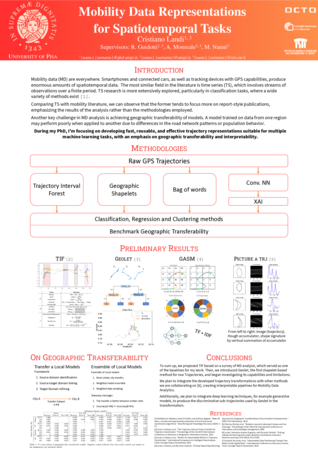Mobility Data Representations for Spatiotemporal Tasks
Mobility data (MD) are everywhere. Smartphones and connected cars, as well as tracking devices with GPS capabilities, produce enormous amounts of spatiotemporal data. The most similar field in the literature is time series (TS), which involves streams of observations over a finite period. TS research is more extensively explored, particularly in classification tasks, where a wide variety of methods exist. Comparing TS with mobility literature, we can observe that the former tends to focus more on report-style publications, emphasizing the results of the analysis rather than the methodologies employed. Another key challenge in MD analysis is achieving geographic transferability of models. A model trained on data from one region may perform poorly when applied to another due to differences in the road network patterns or population behavior. We aim to develop fast, reusable, and effective trajectory representations suitable for multiple machine learning tasks, with an emphasis on geographic transferability and interpretability.
